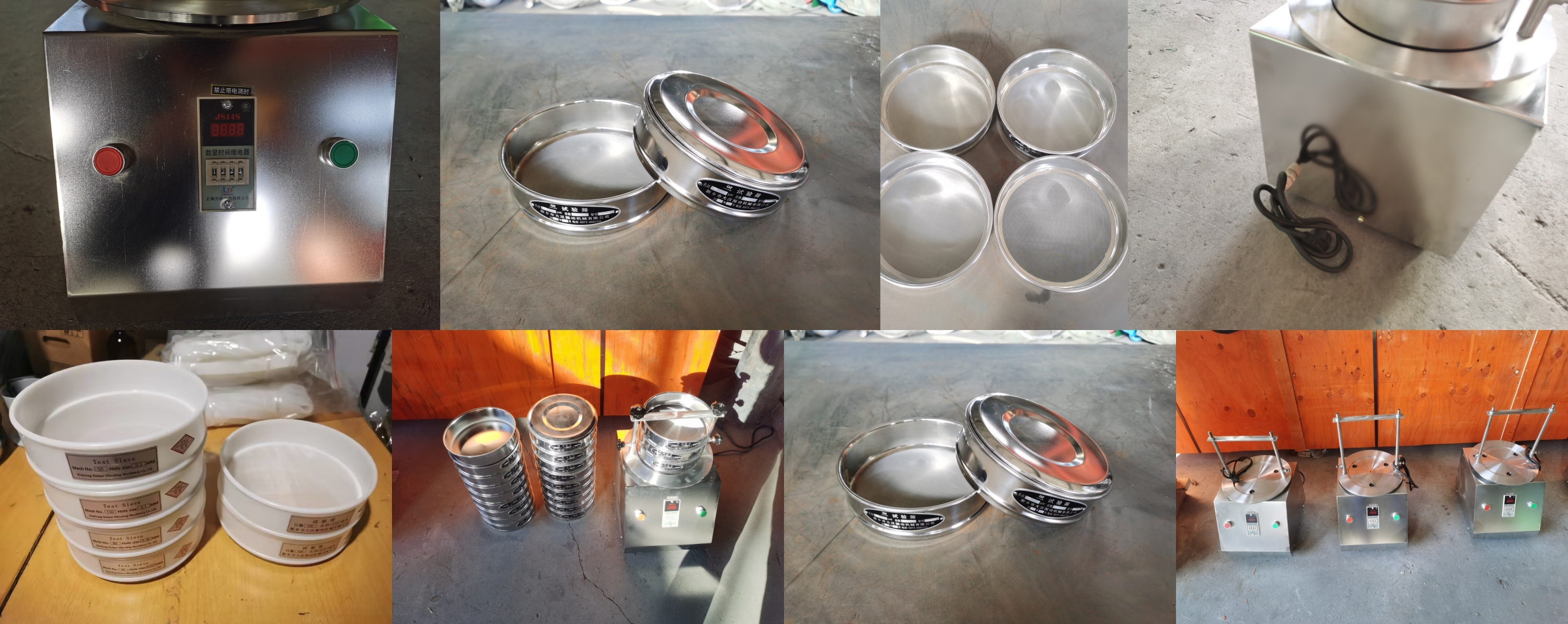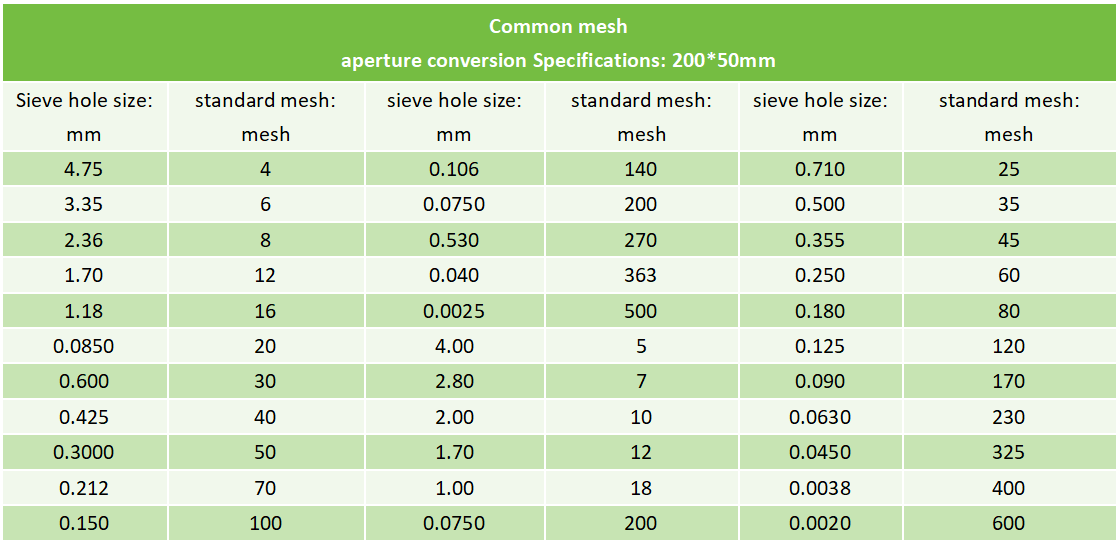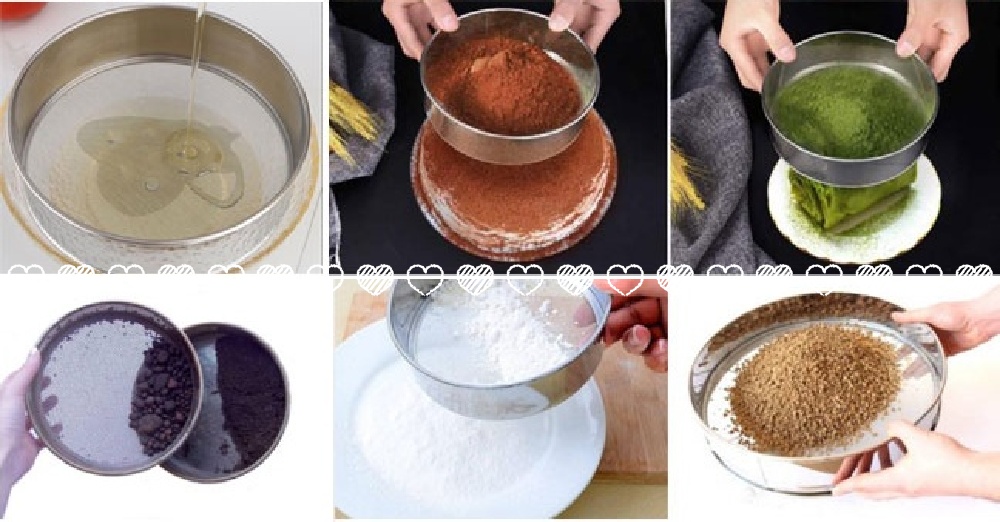Thursday February-27 2025 11:50:24
Laboratory powder test sieve is an instrument used to screen and grade powder or granular materials. It is mainly used to analyze and grade the particle size of materials in a laboratory environment. It usually consists of a set of standard sieves that can separate materials into different grades according to particle size. Through sieves with different apertures, materials can be separated according to particle size to obtain components of different particle sizes. This has a wide range of applications in materials science, chemistry, pharmaceuticals, food and other fields.

Place the powder sample into the top sieve frame. Move the powder on the sieve by vibrating or shaking it manually. The powder is separated into different particle sizes according to the size of the sieve apertures, with larger particles remaining on the upper sieve and smaller particles passing through the sieve and falling into the lower layer. Finally, the powder is separated into multiple particle size grades and collected in each sieve frame and bottom tray.

1. Screen frame: usually made of stainless steel or brass, the screen frames can be stacked to form a multi-layer screening system.
2. Screen: The screen aperture is manufactured according to standard specifications (such as ISO, ASTM, etc.) and is used to separate materials of different particle sizes.
3. Chassis: used to receive fine particles passing through the bottom screen.
4. Cover: prevents the material from splashing during the screening process.
5. Vibration device: Some test sieves are equipped with a vibration motor or a manual vibration device to improve the screening efficiency.

Prevent laboratory powder agglomeration: fine powders are prone to agglomeration due to humidity, static electricity or surface tension, resulting in reduced screening efficiency. The laboratory powder test sieve is equipped with a vibration device, which breaks the agglomerated particles through high-frequency vibration and promotes powder dispersion. Dry the powder before screening to reduce the effect of humidity on agglomeration.
Prevent laboratory powder electrostatic adsorption: fine powders are easily adsorbed on the screen or screen frame due to static electricity during the screening process, affecting the screening effect. Use antistatic materials to reduce static adsorption, increase humidity in the screening environment, reduce static electricity generation, and ground the test sieve equipment to eliminate static electricity accumulation.
Avoid laboratory powder screen clogging: fine powders are prone to clogging the screen, especially when the powder humidity is high or the particle shape is irregular. Clean the screen regularly during the screening process to keep the screen holes unobstructed. Choose the appropriate screen material and aperture according to the powder characteristics to reduce the risk of clogging.
Avoid uneven distribution of laboratory powder particle size: uneven distribution of powder particle size leads to inaccurate screening results. Use multi-layer screens to separate powders of different particle sizes step by step to improve screening accuracy. Prolong the sieving time appropriately to ensure that all particles pass through the sieve. Mix the powder thoroughly before sieving to ensure uniform samples.
Insufficient sample representativeness: Insufficient sieving sample quantity or uneven sampling leads to lack of representative results. Divide large samples into multiple small batches for sieving to ensure the representativeness of each batch of samples. Mix the powder thoroughly before sieving to ensure uniform samples. Perform multiple sieving experiments and take the average value to improve the reliability of the results.

1. Chemical laboratory: Laboratory powder test sieve is often used to perform screening tests on chemical raw materials, catalysts, powder materials, etc. to evaluate their particle size distribution and screening performance.
2. Food science laboratory: Food science laboratories usually use laboratory powder test sieves to perform screening tests on food raw materials, additives, granular foods, etc. to study their particle size, shape and other characteristics.
3. Pharmaceutical research laboratory: Laboratory powder test sieve can be used to perform screening tests on drug particles, drug powders, pharmaceutical raw materials, etc. to evaluate their particle size and distribution.
4. Material science laboratory: Material science laboratories often use laboratory powder test sieves to perform screening tests on various material powders to study their particle characteristics and distribution, and provide data support for material design and process.
5. Metallurgical laboratory: Metallurgical laboratories usually use laboratory powder test sieves to perform screening tests on metal powders, alloy powders, etc. to evaluate their particle size, shape and other characteristics, and provide reference for metallurgical processes.
6. Environmental science laboratory: Laboratory powder test sieves can be used to perform screening analysis on particulate matter in environmental samples, such as soil samples, atmospheric particulate matter, etc.



1. Screen selection: Select a screen with a suitable aperture according to the experimental requirements to ensure that the screen meets international standards. The screen material (such as stainless steel, brass or nylon) should be selected according to the material characteristics to avoid corrosion or damage.
2. Sample preparation: The amount of sample screened each time should not be too much to avoid affecting the screening effect. It is usually recommended that the sample amount be 1/3 to 1/2 of the screen diameter. If the sample is wet, it needs to be dried in advance to avoid clogging the screen.
3. Screening operation: When using a vibration device, the vibration intensity should be moderate. Too strong may cause damage to the screen, and too weak will affect the screening efficiency. The screening time needs to be adjusted according to the characteristics of the sample. It is usually based on the material no longer passing through the screen to ensure that the sample is evenly distributed on the screen surface to avoid local accumulation affecting the screening results.
4. Equipment maintenance: The screen needs to be thoroughly cleaned after each use to prevent residual materials from clogging the screen holes. Check the screen regularly for damage or deformation, and replace the damaged screen in time. The screen frame and screen should be handled with care to avoid deformation or damage caused by collision.

Laboratory powder test sieve is a commonly used laboratory instrument, which is widely used in materials science, chemistry, pharmaceuticals and other fields. By selecting a suitable test sieve, the particle size distribution of the material can be accurately determined, providing reliable data for subsequent experimental research.
laboratory test sieve is also called standard sieve, test sieve, laboratory vibrating screen, sample sieve, inspection sieve, standard analysis sieve...
What Is An Electromagnetic Sieve Shaker?
Electromagnetic sieve shaker is a screening equipment used for testing and laboratory research. It is often used to screen and classify small batches...
Test sieve shaker is a laboratory equipment used for particle screening and classification, also known as laboratory shaker or laboratory vibrating...
Phosphate Test Sieve is an experimental tool used to screen different particle sizes in phosphate samples and detect the phosphate...
304 stainless steel soil test sieve
304 stainless steel soil test sieve is a professional screening equipment specially used for soil particle size analysis, particle...
Feb 27, 2025
Laboratory powder test sieve is an essential instrument used for screening and grading powder or gran...
Feb 27, 2025
Soil Aggregate Sand Test Sieve
What is a soil aggregate sand test sieve? Soil aggregate sand test sieve is an instrument specially u...
Feb 27, 2025
What is a mineral analysis test sieve? Mineral analysis test sieve is an important tool specially use...
Feb 27, 2025
Drug test sieve is a screening device specially used in drug research and production. It is mainly us...
![]()
Then we look forward to hearing from you
Contact Us
Industrials
Yanjin county forest park gate to the west 1000 meters north road sitemap
